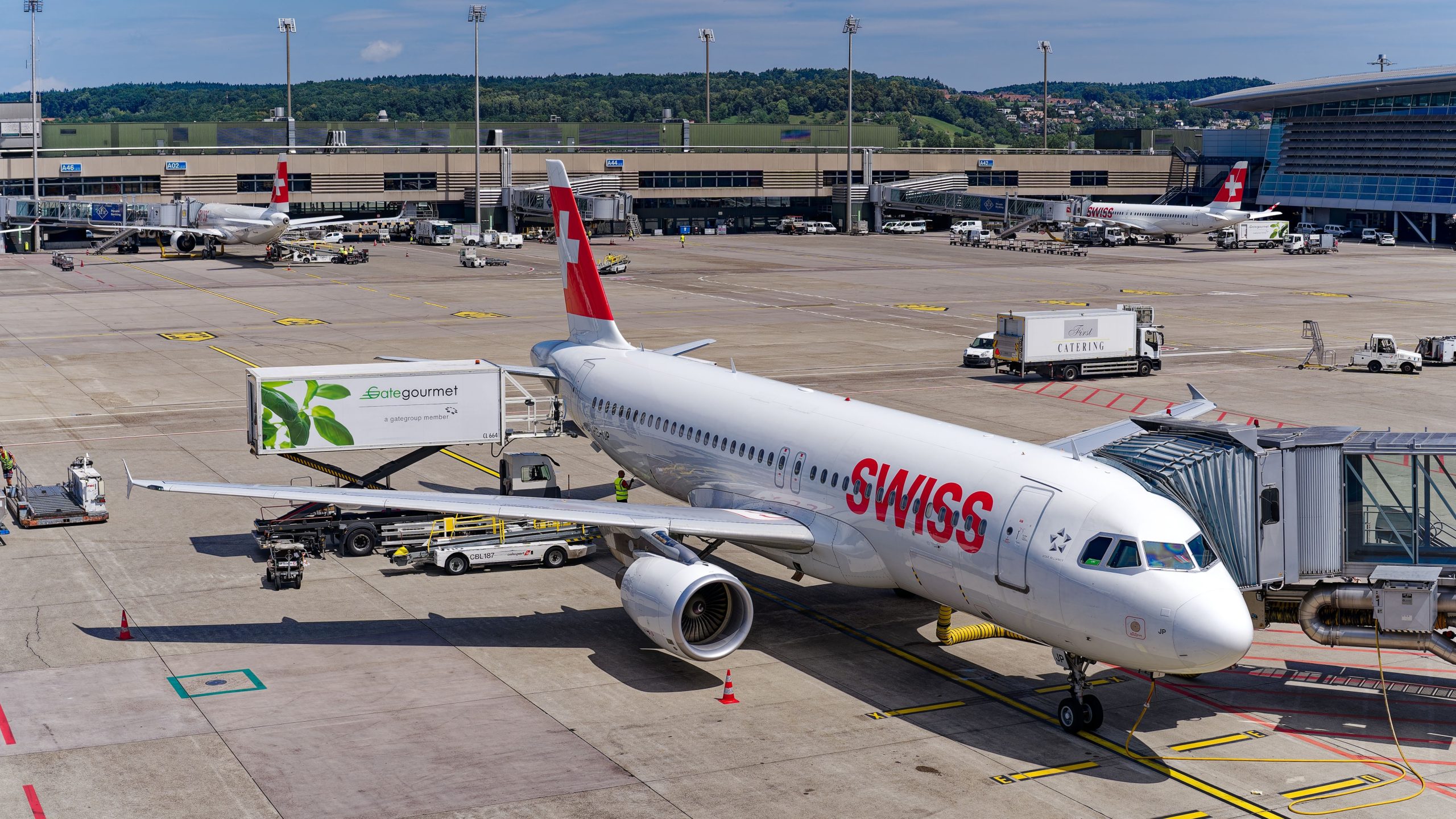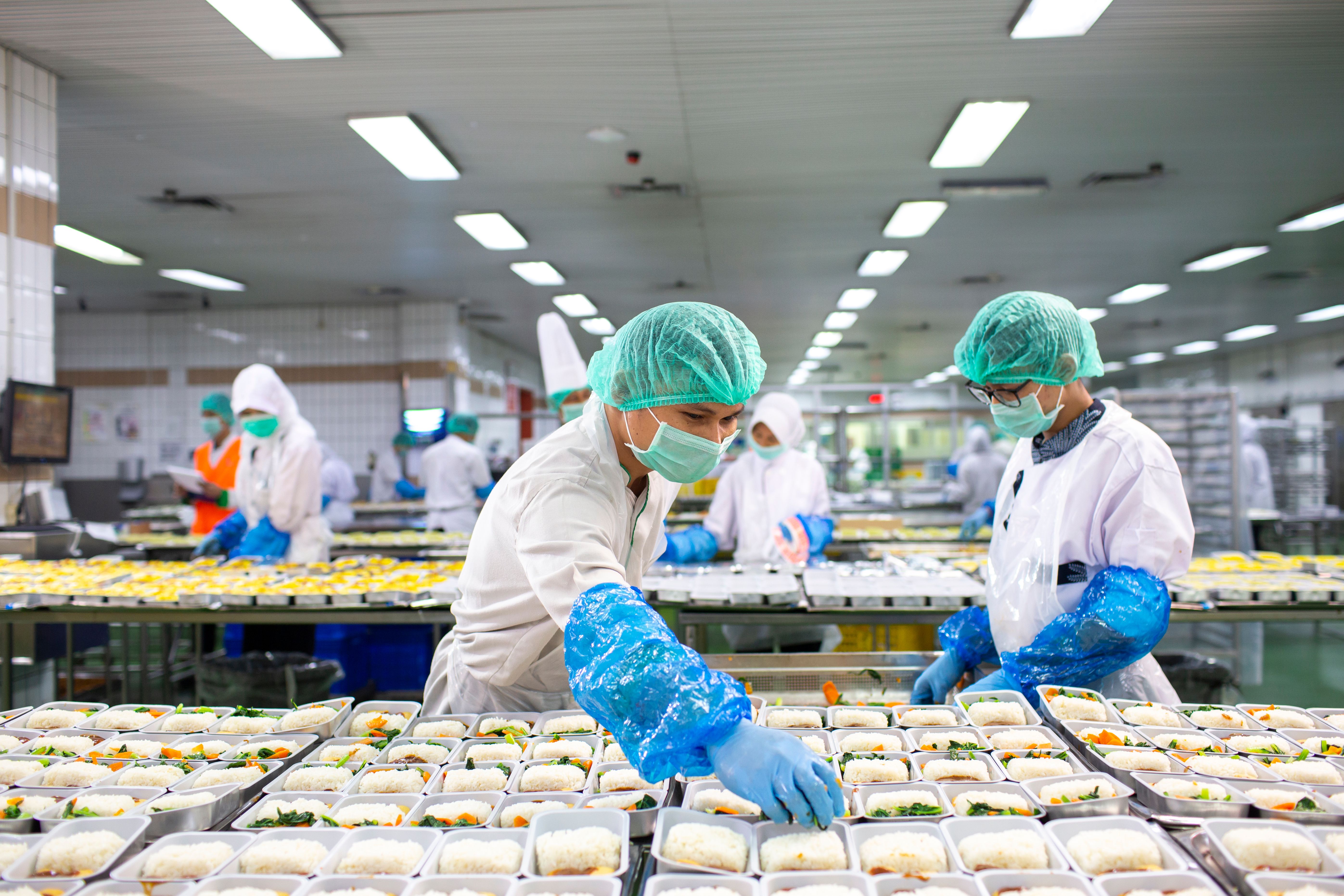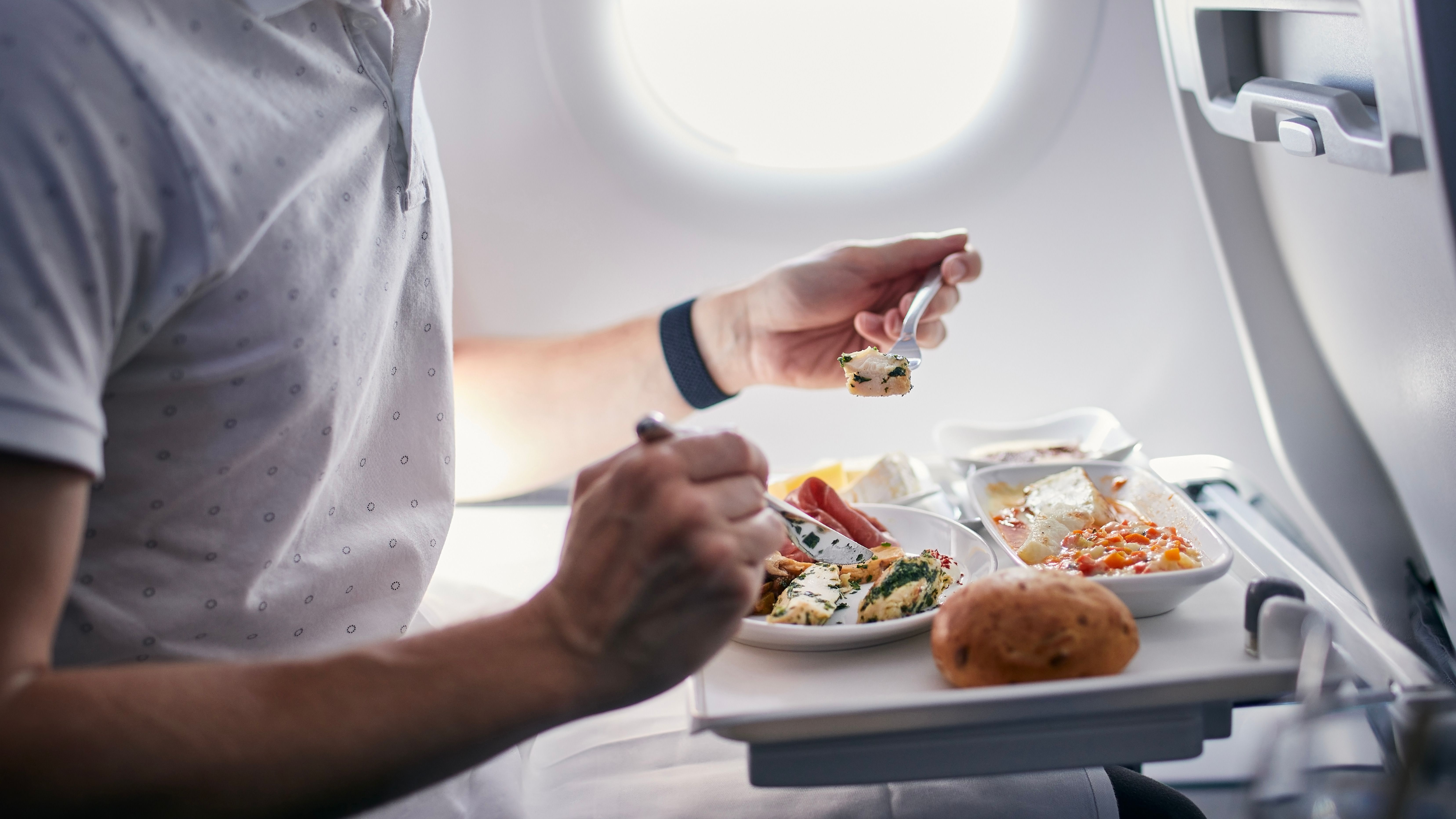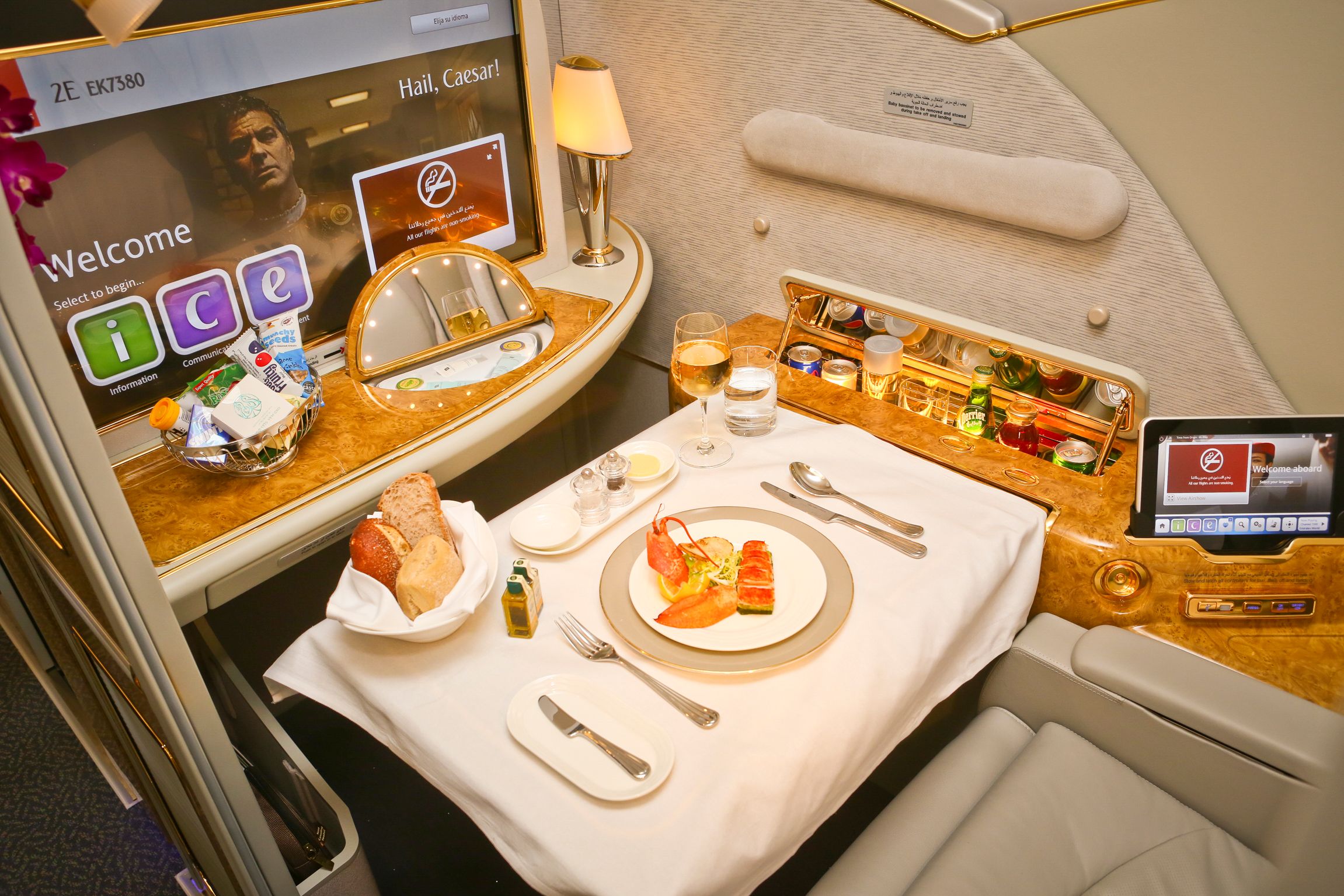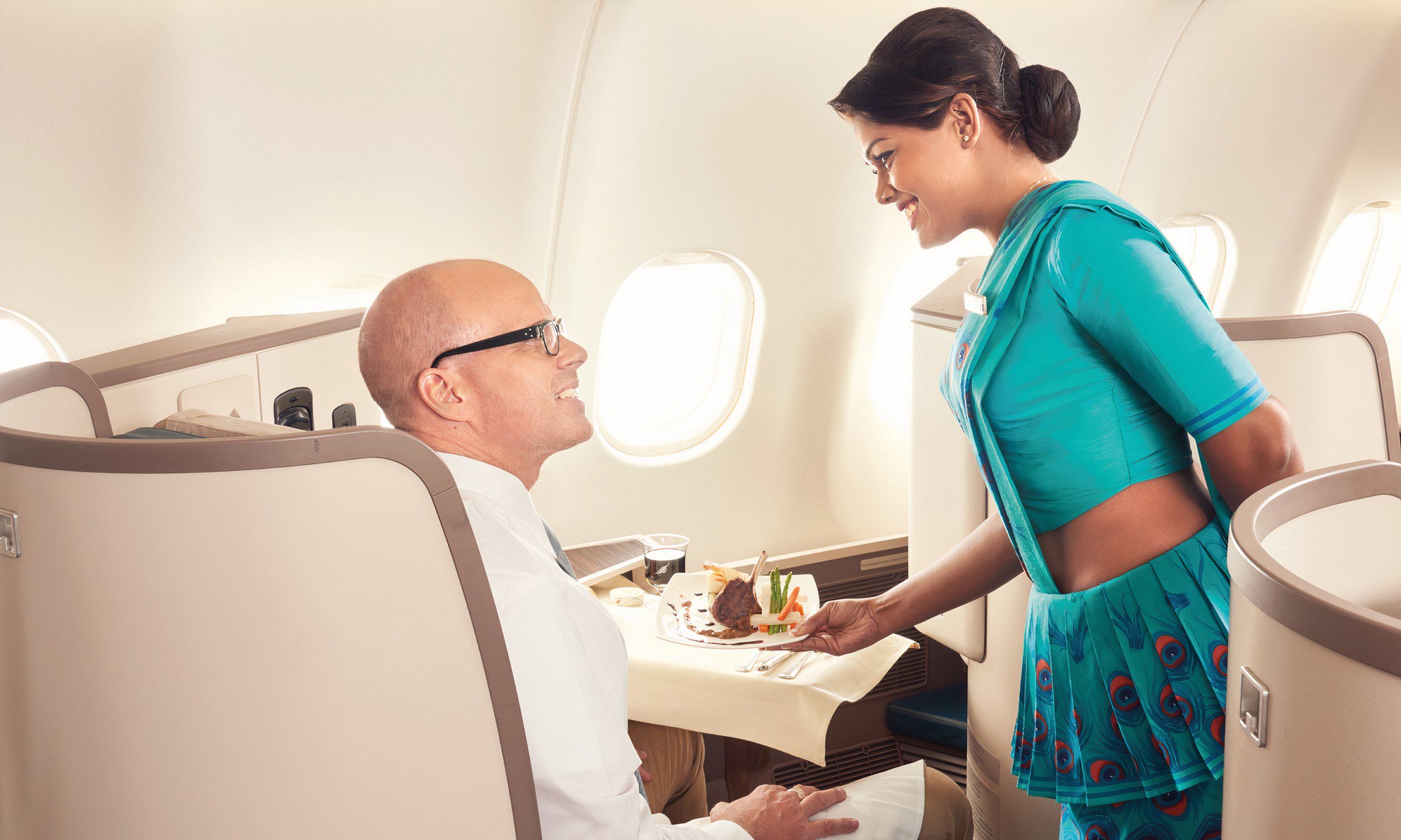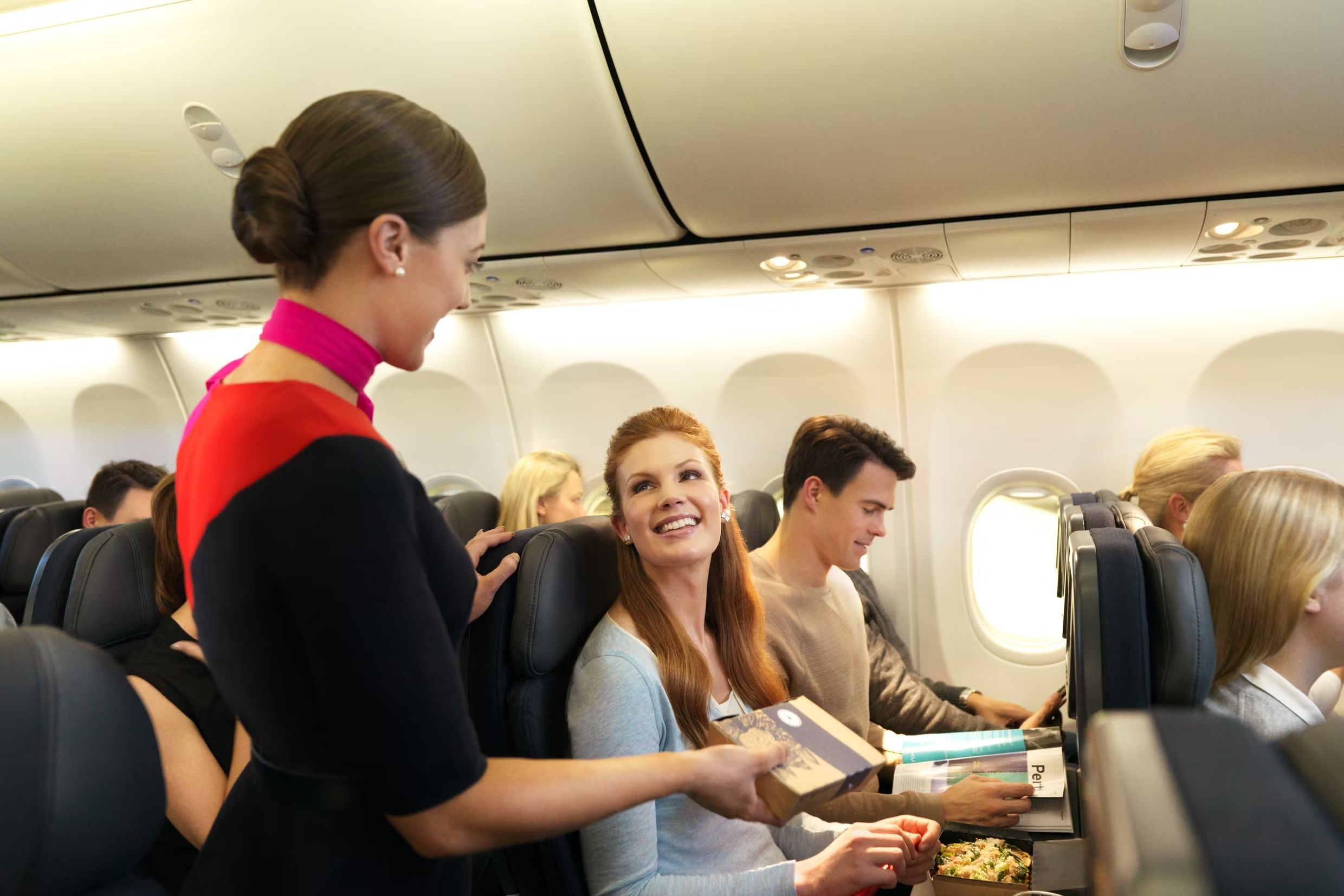A recent
failed food inspection in Detroit caused 200 flights originating from there to operate without in-flight catering
. There are many good reasons why airlines need to be very careful when it comes to inflight catering
. While few airlines actually prepare the airline food
themselves (
which is generally outsourced to catering companies
), they are the ones who people are likely to blame for getting food poisoning.
Avoiding food poisoning
The disaster comedy 1980 movie, Airplane! (written and directed by Jim Abrahams) shows all the flight crew becoming incapacitated mid-flight from food poisoning leaving the plane flying pilotless. While it is a comedy movie, in 1992, 76 passengers fell ill after flying from Peru to Los Angeles (Cholera was traced to shrimp served on the flight).
BK Awangga I Shutterstock
The CDC estimates that around 48 million people get sick every year in the United States because of foodborne illnesses. The last thing an airline wants is passengers getting sick on flights.
Food-poisoned people often have to use the lavatory extensively, and this isn’t really something aircraft are set up for—the aircraft’s facilities will very quickly become overwhelmed if many people get sick. The airline is not a hospital or pharmacy and is unable to provide passengers with the care they need.
|
Food poisoning on Japan Airline 1975 incident: |
Number of passengers affected: |
|---|---|
|
Total passengers on flight: |
344 |
|
Passengers who suffered food poisoning: |
196 |
|
Passengers admitted to hospital: |
144 |
|
Passengers who suffered diarrhea: |
129 |
Many airlines (like ![]() Qatar Airways
Qatar Airways
and ![]() Singapore Airlines
Singapore Airlines
) have carefully managed images as luxurious, professional, and safe airlines. While an airline like Ryanair would likely have little to lose in terms of reputational image (not that Ryanair does much catering anyway), all carriers want to avoid the notion that they are food poisoning their passengers at all costs.
Airlines may face lawsuits and other legal woes if they are found to be serving unsafe food. One of the worst cases came in 1975. In 1975,
Japan Airlines found itself in the middle of a food poisoning scandal
after more than half of the flight’s 344 passengers became sick (many with diarrhea). Staphylococcus aureus bacteria was found in the food served on the flight, and after learning about the incident, Kenji Kuwabara (Vice President of International Inflight Catering) committed suicide.
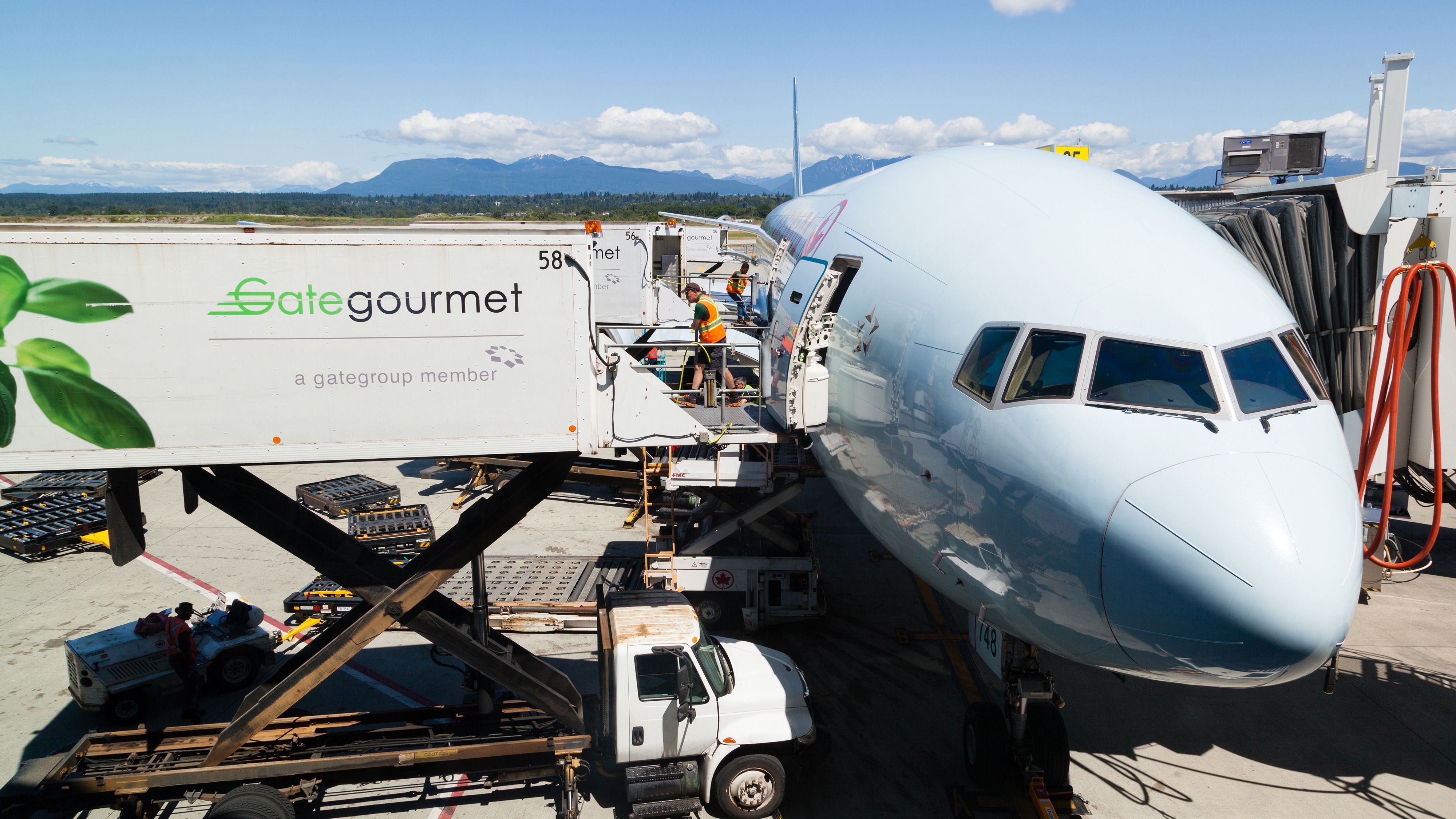
Related
Dinner Is Served: A Brief Overview Of How Aircraft Are Catered At The Gate
How snacks and drinks make it to you at 37,000 feet.
Dietary requirements, food allergies, & food allegies
Airlines need to take into account many other factors as well when preparing food on flights. Some passengers are vegan, while others may have strict religious-influenced diets. Perhaps the biggest concern is those with food allergies. Passengers going into severe anaphylaxis at 40,000 feet trapped in a metal tube is not ideal (which is why peanuts are not served on aircraft). If a passenger’s medical emergency is bad enough, the aircraft may be forced to divert and make an emergency landing so the person can receive medical attention.
Photo: Jaromir Chalabala | Shutterstock
|
Emirates’ meals for dietary requirements |
|
|---|---|
|
Religious meals: |
Indian Vegetarian Meal (AVML), Non‑Vegetarian Hindu Meal (HNML), Vegetarian Jain Meal (VJML), Kosher Meal (KSML). Note all Emirates’ meals are halal certified for Muslims |
|
Medical and Dietary Meals: |
Bland Meal (BLML), Diabetic Meal (DBML), Low Fat Meal (LFML), Low‑Lactose Meal (NLML), Low Salt Meal (LSML), Gluten Friendly Meal (GFML) |
|
Vegetarian Meals: |
Vegan Meal (VGML) |
|
Baby and Child Meals: |
Child Meal (CHML), Baby Meal (BBML) |
|
Special occasions: |
Cakes (SPML), Champagne (SPML) |
A glimpse at the special dietary meals offered by  Emirates
Emirates
demonstrates just how complicated catering can be. In all (excluding “special occasions,” Emirates offers a total of 13 special dietary meals made up of four types of religious meals, seven medical/dietary/vegetarian meals, and two meals for youngsters. This is before considering the regular meal options and the different meals offered for different ticket classes.
Photo: Emirates
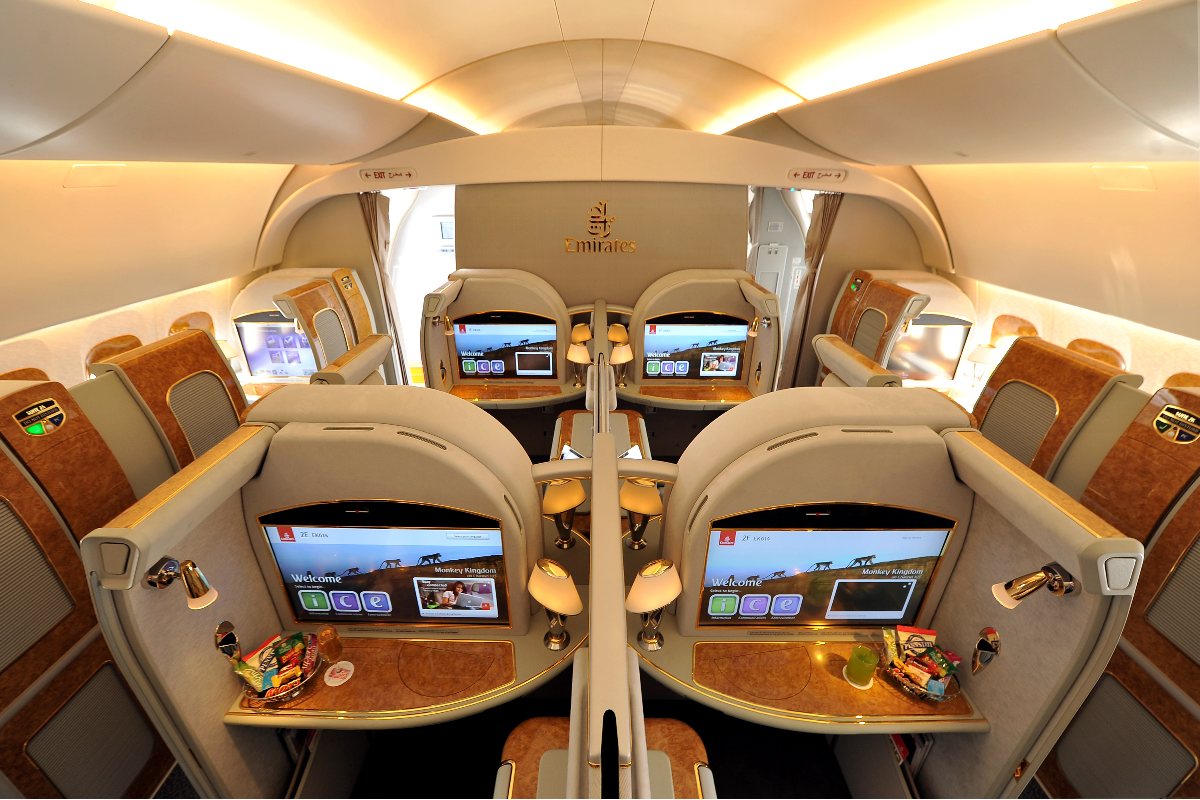
Related
Dine-On-Demand Services In Aviation: A Brief Guide
Dine-on-demand is a service that is only offered by a few luxury airlines for business and/or first class passengers.
Many actors, standards, and regulations
However, it is not always easy for airlines to ensure the meals are safe (after all, they don’t actually prepare the meals). Airlines typically operate in many countries around the world, where they need to rely on a local catering company. Foreign food safety standards vary around the world.
The Global Food Safety Resource quotes Sonia Carrington, Quality Assurance Coordinator at Goddard Catering in Barbados as saying, “we work to the international food safety guidelines but we are audited by several different companies depending on the preferences of each airline.”
Photo: SriLankan Airlines
There can be long intervals between the meals being prepared and being served on the flight – and the climate can be a factor as food can sometimes be left outside if loading is delayed. The story is not straightforward for airline catering companies either – these often have to meet multiple food safety standards. Gategroup is one of the largest airline catering companies. The company serves over 700 million passengers annually in over 60 countries around the world.
According to the IATA’s Cabin Operations Safety Best Practices Guide, the key players involved in food safety (apart from the cabin crew) are:
- National health administrations
- Local health authorities
- Airline catering companies
- Airlines Aircraft manufacturers
- Catering equipment manufacturers
Photo: Qantas
An airplane is considered part of the country of registration, but the food that comes into the place is subject to the food regulations of the country it comes from. The airline, meanwhile, may be bound for a third country with a third set of standards.

